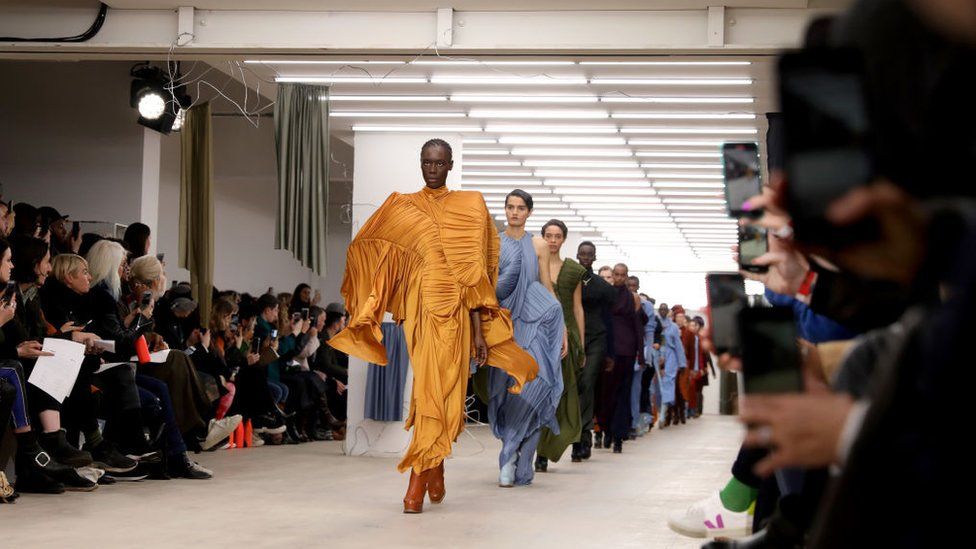Fashion is more than just clothing; it’s a form of self-expression, a cultural statement, and an industry that drives economies worldwide. From the ancient civilizations to the modern runways, fashion limberbutt2016.com has evolved and adapted, reflecting the changing times and societal norms. In this article, we delve into the multifaceted world of fashion, exploring its significance, trends, impact, and the future it holds.
Introduction to Fashion
Defining Fashion
Fashion encompasses a broad spectrum of styles, trends, and aesthetics, encompassing clothing, accessories, footwear, and even hairstyles. It’s a dynamic and ever-changing form of expression that reflects individual tastes, cultural influences, and societal values.
Historical Overview
Fashion has a rich history dating back centuries, with each era leaving its mark on the clothing and styles of the time. From the elaborate garments of royalty in the Middle Ages to the minimalist designs of the 21st century, fashion has evolved through various influences and movements.
The Importance of Fashion
Personal Expression
Fashion allows individuals to express their personality, creativity, and identity through their clothing choices. Whether it’s bold and eclectic or understated and classic, what we wear speaks volumes about who we are and how we want to be perceived.
Cultural Significance
Fashion is deeply intertwined with culture, serving as a means of preserving traditions, celebrating diversity, and expressing collective values. Traditional garments, ethnic wear, and cultural motifs often find their way into mainstream fashion, bridging gaps and fostering cross-cultural connections.
Economic Impact
The fashion industry is a powerhouse in the global economy, driving sales, creating jobs, and influencing consumer spending habits. From haute couture to mass-market retailers, fashion brands contribute significantly to GDP and trade, making it a vital sector in many countries’ economies.
Trends in Fashion
Fast Fashion vs. Sustainable Fashion
The rise of fast fashion has revolutionized the way we consume clothing, offering affordable and trendy options at lightning speed. However, this rapid production cycle comes at a cost to the environment and workers’ rights. On the other hand, the sustainable fashion movement advocates for ethical practices, eco-friendly materials, and fair labor conditions, challenging the status quo and promoting conscious consumerism.
Influential Designers and Brands
From Chanel to Gucci, fashion designers and brands play a pivotal role in shaping trends and setting the tone for each season. Their creative vision, craftsmanship, and marketing prowess define the industry’s landscape, inspiring millions of consumers and influencing fashion enthusiasts worldwide.
Fashion and Social Media
Instagram and Fashion Influencers
Social media platforms like Instagram have democratized fashion, giving rise to a new breed of influencers who wield significant influence over consumer behavior. From outfit inspiration to product recommendations, fashion influencers curate aspirational lifestyles and cultivate loyal followings, driving sales and brand awareness in the digital age.
Impact on Consumer Behavior
The pervasive presence of fashion on social media has transformed how consumers discover, shop, and engage with brands. With a swipe of their finger, users can explore endless style inspirations, shop directly from their favorite influencers, and participate in online communities centered around fashion and beauty.
Fashion and Sustainability
Eco-friendly Materials and Practices
As consumers become more environmentally conscious, there’s a growing demand for sustainable fashion alternatives. From organic cotton to recycled fabrics, brands are innovating to reduce their carbon footprint and minimize waste throughout the supply chain. Sustainable fashion isn’t just a trend; it’s a movement towards a more responsible and ethical industry.
Slow Fashion Movement
Contrary to the fast-paced nature of fast fashion, the slow fashion movement advocates for quality over quantity, emphasizing timeless designs, craftsmanship, and longevity. By investing in well-made garments that withstand the test of time, consumers can reduce their environmental impact and support artisans and small-scale producers.
Fashion and Technology
Wearable Tech
Technology and fashion converge in the realm of wearable tech, where clothing and accessories are embedded with sensors, microchips, and connectivity features. From smartwatches to fitness trackers, wearable tech enhances functionality, style, and personalization, blurring the lines between fashion and innovation.
3D Printing in Fashion
3D printing has revolutionized the way garments and accessories are designed and produced, offering endless possibilities for customization and creativity. From avant-garde runway pieces to bespoke jewelry, 3D printing empowers designers to push the boundaries of traditional manufacturing methods and create truly unique pieces.
Fashion and Diversity
Representation in the Industry
The fashion industry has historically been criticized for its lack of diversity and inclusivity, but strides are being made towards greater representation on and off the runway. From diverse casting to inclusive sizing, brands and designers are embracing diversity as a core value, reflecting the diverse world we live in.
Body Positivity Movement
The body positivity movement challenges narrow beauty standards and celebrates bodies of all shapes, sizes, and abilities. Inclusivity and acceptance are at the forefront of this movement, inspiring brands to expand their size ranges, feature diverse models in their campaigns, and promote self-love and acceptance within the fashion community.
The Future of Fashion
AI and Personalized Fashion
Artificial intelligence is poised to revolutionize the fashion industry, from predictive analytics to virtual styling assistants. By harnessing AI algorithms, brands can analyze consumer data, predict trends, and offer personalized recommendations tailored to each individual’s preferences and style.
Virtual Fashion Experiences
With the rise of virtual reality and augmented reality technologies, fashion experiences are becoming more immersive and interactive than ever before. From virtual fashion shows to digital try-on apps, consumers can engage with brands and products in virtual environments, blurring the lines between online and offline shopping.
Conclusion
Fashion is a dynamic and ever-evolving phenomenon that transcends mere clothing, influencing culture, society, and individual expression. From the runway to the streets, it shapes our identities, reflects our values, and connects us to the world around us. As we navigate the complexities of the fashion industry, let us strive for sustainability, diversity, and innovation, ensuring that fashion continues to inspire and empower generations to come.

:max_bytes(150000):strip_icc()/fashion-trends-GettyImages-1457816153-d2982e954afe4b42bf5587f087da90d4.jpg)


